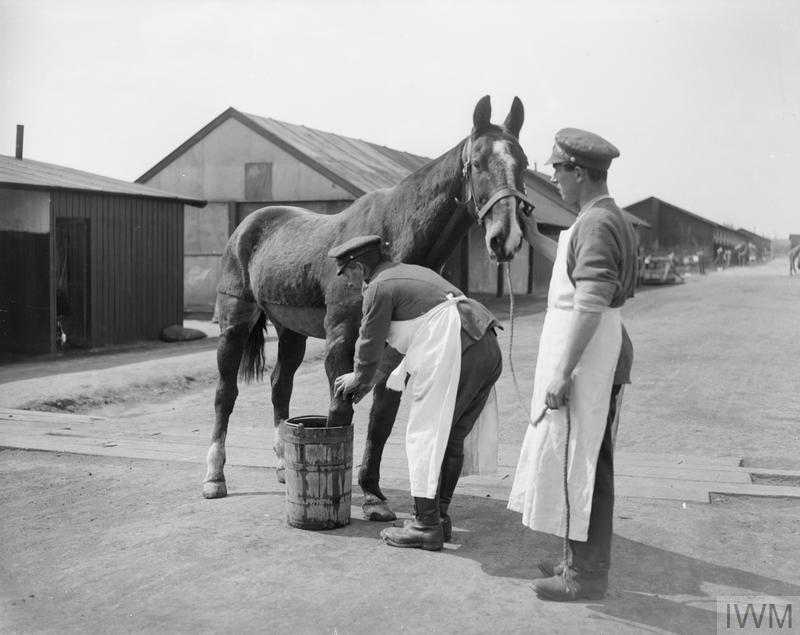Cambrai, 1917
The Battle of Cambrai fought in November/December 1917, proved to be a significant event in World War One. Cambrai was the first battle in which tanks were used en masse In fact, Cambrai saw a mixture of tanks being used, heavy artillery and air power. The attack started at 06.20 on November 20th 1917.
The Honour is borne on the Guidon of the 4th Hussars.
Detail
On the night of the 19th orders were received for the attack on Cambrai. This was the first intimation received of any impending attack, though in former attacks even regimental officers knew long beforehand of what was going to occur.
At 1.45 am on the 20th the regiment marched via Roisel to St.Emilie and watered there. and then halted near Villers Faucon. At 6.20 am the battle opened with a deafening bombardment.
Then at 11.15 am the regiment started, and advanced via Gouzeaucourt to the hill three miles south of Masnieres.
They had in front of them here the 5th Cavalry Brigade, while the Canadian Brigade and the 5th Cavalry Division were in front of them. The battle had gone wonderfully well up to a point, but the Canal du Nord proved to be too bard a nut to crack, and only one squadron of Canadian cavalry got over.
The regiment halted here, watering from shell-holes, until 3.30 pm on the 21st and then moved back to Villers Faucon. Here they remained until 5.15 pm on the 23rd and moved very hurriedly to just north of Fins.
At 7 am on the 25th the brigade marched to a point one-mile north-west of Bibecourt. and halted there in full view of the Germans east of Masnieres. At about 11 am enemy field guns opened fire, and the regiment was able to edge away until out of sight in a dip in the ground.
Here they remained until 5 pm without being molested, and they were then ordered to leave a dismounted party and find the Headquarters for the dismounted brigade party, while the horses were sent back to Fins, which was reached long after dark.
The dismounted party remained at Ribecourt for the night, and at 4 pm on the 26th moved to dug-outs on the road running due north from Havrincourt, and about two miles due north of it. At 6 pm on the 27th, the party moved to Bourlon Wood to take over the line held by the 2/7th West Yorks.
The relief was completed by 3.15 am, the 4th Hussars being on the right sector-5th Cavalry Brigade on their right, 16th Lancers on their left, 5th Lancers in support. The line ran along the northern edge of the wood, about 200 yards inside it, facing the village of Bourlon, still held by the Germans, though there were said to be some men of the Highland Light Infantry still in it.
The general confusion of the situation was extreme, all sorts of units being mixed up all over the wood; while it was also full of German snipers, and was shelled pretty continuously with gas shells.
The remaining hours of darkness were spent digging. The shelling the next day was heavy. The shelling went on continuously up to 8 pm when the 4th and 5th Dismounted Battalions were relieved by infantry, the 4th Hussars coming into support. Here again, the enemy shelled steadily all night, chiefly gas and lachrymatory (tear gas) shells.
On the night of the 29th, the regiment was relieved by infantry, and moved back to Flesquieres and rested till the next day, when the horses were picked up at Beaucamp and the party returned to Fins at a pace as near a gallop as could be worked up in the heavy traffic.
This was due to the enemy having broken through at dawn north of Epehy, at the place where the regiment had been in the line in July 1917. They had completely surprised the garrison and reached Gouzeaucourt about 10 am. Here they stopped, largely in order to loot the canteen there, and were driven out by the Guards.
Fins and vicinity were shelled by high-velocity guns as soon as the attack commenced. and there were many stragglers pouring through it a few hours afterwards.
As soon as the dismounted party got in the regiment stood-to, and at 5.30 p.m. was moved to a position of readiness south-east of Dessert Wood, but at 8.15 pm was recalled to camp and off-saddled.
The next day there was still a feeling of insecurity in the air, but tile Germans seemed to have somewhat over-reached themselves and were losing heavily all along the front of attack. Fins were shelled by high-velocity guns.
From the 2nd to the 4th December they remained in the camp, finding working parties for trenches near Gouzeaucourt. The weather all this time was bitterly cold, while we had only a few tents, thus causing some sickness. On the 4th a dismounted party went up to Vaucelette Farm, near Villers Guislain, and took over the line. The night and next day passed without incident, and at 8 pm they returned.


